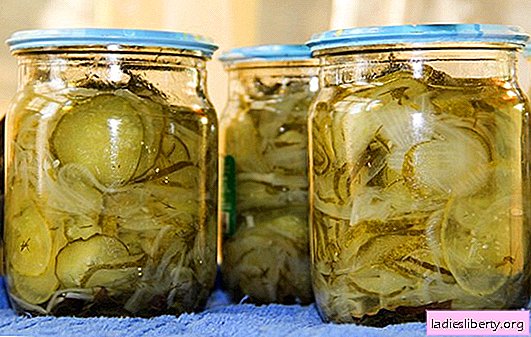
Unfortunately, the number of childhood allergic diseases is increasing every year. According to medical statistics, about 20% of children in the world suffer from certain manifestations of this disease.
Translated from the Greek word "allergy" means "reaction to someone else." Thus, by childhood allergies understand the hypersensitivity of the child’s immune system to the effects of any substances or physical factors.
Causes of Allergies in Children
First of all, this disease in a child may appear due to such reasons:
1. Hereditary factors. That is, if there are signs of it in at least one of the parents, the probability of the child’s illness is 35–40%; if both parents are allergic, then this probability increases to 75%.
2. Improper nutrition. It is proved that allergies are primarily susceptible to babies who are artificially fed. This is because cow milk protein has very strong allergic properties. In addition, childhood allergies can be triggered by an unbalanced diet, poor in vitamins and trace elements, and the abuse of the mother during pregnancy by allergenic foods such as chocolate, citrus fruits, eggs, fish, strawberries, etc.
3. The state of maternal health. There is a high risk of the child getting a disease if his mother’s immunity decreases, the intestinal microflora is out of balance, acute respiratory infections are suffered, etc. In addition, the risk of developing allergic diseases in a child increases when parents smoke, abuse alcohol, and in the case of various complications of pregnancy.
A frequent companion of childhood allergies is diathesis. However, it is not an allergic disease. Diathesis is a state of the child's body, which is characterized by unusual reactions from the skin, mucous membranes of the respiratory, urinary tract and gastrointestinal tract to the effects of various stimuli, including some foods. It arises due to the fact that children of the first year of life have a reduced protective function of the intestine, since at this time the production of digestive enzymes and protective antibodies is still insufficient. All this leads to the absorption of underdeveloped food components into the blood and, as a consequence, to the start of a chain of allergic reactions. Thus, the presence of signs of diathesis indicates that the child has an increased susceptibility to the development of allergic diseases and the need for careful observation by an allergist.
Symptoms and signs of allergy in children
In children, the most common allergy is expressed by the following symptoms:
1. Atopic dermatitis. A very common phenomenon occurs on the background of allergic diathesis. It can be recognized by the swelling of the skin, their redness, and the appearance of an itchy rash on the skin. Usually occurs as a reaction to the introduction of complementary foods, and during breastfeeding may occur when allergenic products are consumed by the mother of the child. As a rule, the symptoms of atopic dermatitis disappear with age.
2. Allergic rhinitis (runny nose). It is seasonal or year-round. The first kind accompanies in children allergy to house dust; the second occurs, for example, as an organism's response to pollen of flowering plants, etc.
3. Bronchial asthma. The most severe allergic disease of the child. An attack of bronchial asthma looks like a sudden attack of suffocation, and it is not always possible to help the child at home, sometimes it is necessary to hospitalize him.
Ways to treat allergies in children
When a child has signs of diathesis, the main task of the parents is to identify and eliminate allergens from food, through the lungs, or due to direct effects on the skin. Without this measure, all creams and ointments will be powerless.
When breastfeeding such a baby, the mother should follow a strict diet, and the introduction of complementary foods should be very careful. In another case, the child should be provided with an age appropriate amount of proteins, fats and carbohydrates, while excluding products with allergenic properties, which for each specific case are determined individually.
If you have noticed allergic signs in your child, in no case do not start self-treatment, which can cause complications. Having passed the diagnosis of a doctor, which will allow you to identify specific antibodies in the serum, you will receive expert advice on further treatment.
First of all, it is necessary to ensure the cessation of contact with the allergen and begin taking antihistamine antiallergic drugs, which the doctor will prescribe. To reduce the appearance of local symptoms, such as pruritus, these areas should be treated using salicylic alcohol or any other alcoholic tincture.
If it is necessary to provide emergency care to the child, for example, in case of anaphylactic shock or angioedema, it is necessary to ensure maximum air access to the lungs before the ambulance arrives. It is strictly forbidden to use various means with a pungent odor, contributing to the enhancement of bronchospasm.
Comments











